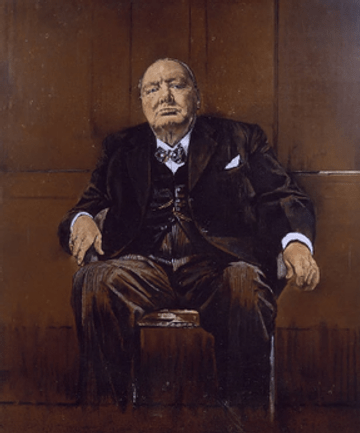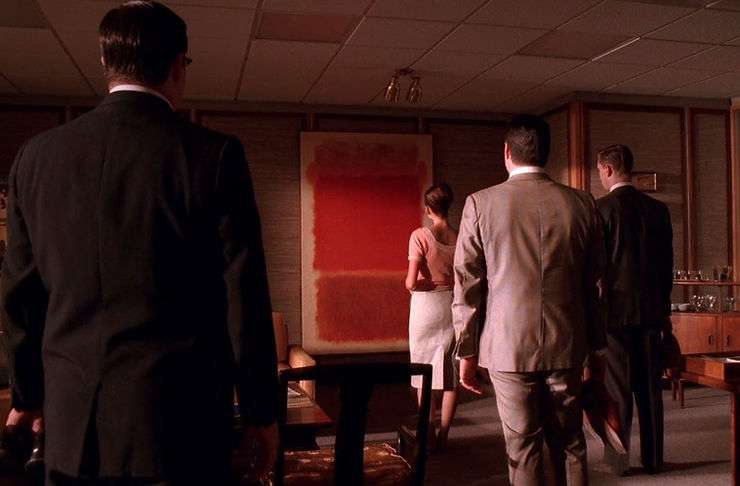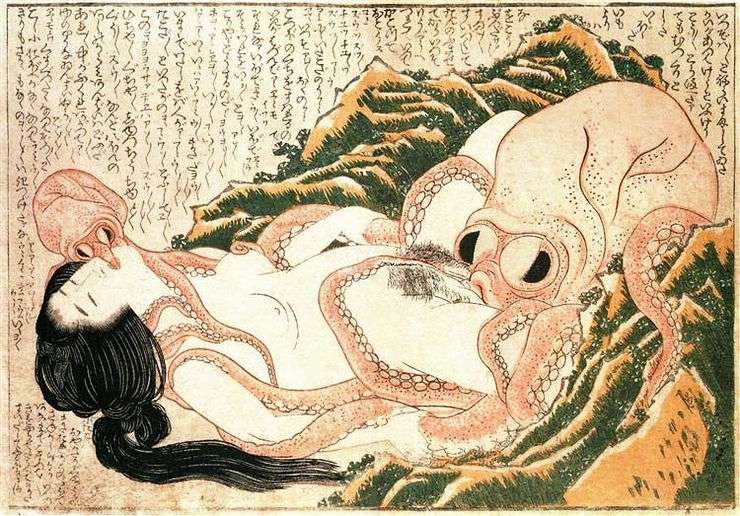We’re back with our second installation of ‘Did You Spot These Famous Artworks in your Favorite TV Show?’ And it’s back by popular demand. While we continue to recommend art exhibitions in your city, for this blog we are revisiting our list of international TV shows that are dripping with some art, a lot of drama and laughs.
Banksy makes his cartoon opening debut with The Simpsons.

We know our previous article filled you in on all the delectable art found in several episodes of the show, but we’re including a few more. There was a lot of speculation regarding the provocative opening titles that were created by Banksy for The Simpsons. Banksy was invited to write the opening titles for the episode of “MoneyBart” in 2010.
In the 2010 airing of the show, Banksy created a dystopian Korean sweatshop where workers slaved away making The Simpsons merchandise. The conditions can only be described as bleak and miserable and in tune with Banksy’s social commentary. So we can only hope that this is an exaggerated illustration of what we could expect from the exploitation of workers in large factories.

Banksy’s was invited to write the opening titles and he did so with glorious rebellion tagging himself on the walls and billboards across Springfield. Producers claim that the falsity of the statement was evident in the blatant airing of the episode, but let’s leave it to you.
The Simpsons with its edgy and dark comedy still manages to mock the culture in which it’s situated, bringing in enough popular culture (and with that many brownie points) to sustain itself through its twenty seventh season.
The Unseen Portrait of Winston Churchill
The Golden Globe winning show, The Crown, gives us a sneak peak into the royal life of Queen Elizabeth II as she ascended the throne at the age of 25. The series mirrors the events that played a big role in shaping the internal politics of Britain and its chronological unfolding is a delightful mix of history, drama, romance and betrayal.
In the episode titled ‘Assassins’, you are confronted with the fragility of none other than Prime Minister, Winston Churchill himself. For the occasion of his 80th birthday, the members of the House of Commons and House of Lords commissioned a portrait of Prime Minister Winston Churchill, played by the fabulous John Lithgow. The artist that was chosen with his task was notable English artist Graham Sutherland. When the painting was revealed to Churchill, he hated the portrait. The portrait saw Churchill scowling, slightly slumped forward surrounded by grey, brown and black tones. As Churchill stares at the remarkable similarity of his own disposition he refuses to accept this version of himself and burns it outside his country home at Chartwell.
The episode moves slightly away from the reality of the event as Churchill himself never burnt his portrait. After the public presentation, the portrait was taken to his home. But it was upon Lady Spencer-Churchill’s death in 1977 that it became clear that she had destroyed the painting a few months after it was delivered even though she claimed the portrait looked “really quite alarmingly like him.”

It is true that Churchill remarked on witnessing the painting crying that it “a remarkable example of modern art”, and while most of us art fans agree with him, he never intended it to be a compliment. Thankfully this dissent did not ruin Sutherland’s artistic career as he continued to paint commissioned portraits there after, even moving to Paris with his wife in his later years.
But this dramatised the creation, unveiling and destruction of the portrait won John Lithgow a Primetime Emmy Award for Outstanding Supporting Actor in a Drama Series. The portrait may have led to Churchill’s retirement but certainly helped kick start an acting career.
A pinch of art to make sense of the madness
Mad Men is the holy-grail for those who love the hustle, bustle, flamboyance, and free flowing whisky of the 1960’s advertising boom. The 1960’s saw a wave or art movements, and has been known as one of the most creative periods in Modern Art History with Pop Art, Abstract Expressionism, drug experimentation and anguish over the Vietnam War.
A glimpse into the tall glass buildings and you will find yourself gaping at the large paintings of Mark Rothko, Katsushika Hokusai, Hans Hoffman, Pablo Picasso and Michal Shapero decorated on their walls. But for this part of ‘Did You Spot These Famous Artworks in Your Favorite TV shows’, were going to focus on two iconic scenes from the Mad Men series.
In Season 2 of the show, Bert Cooper, one of the firm’s aging partners purchases a classic red Mark Rothko to be hung in his office.

Several characters rush into the office to see the monumental painting in front of their eyes and begin to discuss what the artwork means. (If you want to bewilder yourself a little more by asking yourself this question, head over to read our ‘What is ARt’? blog, where we discuss several artworks ranging from absurd to deeply conceptual.) Ken Cosgrove, an account executive at the firm aptly reflects many sentiments by saying “I don’t think it’s supposed to be explained. Maybe it doesn’t [mean anything]. Maybe you’re just supposed to experience it. Because when you look at it, you do feel something, right? It’s like looking into something very deep. You could fall in.”
Do you agree? Is art meant to just be experienced or do we identify what the artist wants to convey with their works. Let us know in the comment section below.
Another piece of art that has seen a recurring appearance is the controversial ‘Dream of The Fisherman’s Wife’ that dates back to 1814 created by Katsushika Hokusai. And while the artist that created the heavily appropriated ‘ The Great Wave Off Kannagawa’, this particular artwork stirred a lot of controversy in the West as the depiction of human coitus with animals was unchaste, to say the least. But not for the Japanese, as motifs such as these have been common in Japanese animation and manga since the late 20th century.
In it, an octopus performs oral sex on a human woman as a smaller octopus kisses her and strokes her nipple.

Seen again, Bert Cooper hangs this in his office. The Sterling Cooper founding partner, who has passed away reappears in a dream-sequence in the passenger sea of Don Draper’s Cadillac proudly showing off the illustration.
“I picked it for its sensuality, but also, in some way, it reminds me of our business,” he explains. “Who is the man who imagined her ecstasy?”
This has been subjected to a lot of sexist scrutiny as commonly been identified in the advertising industry, but that’s a conversation for another day. The dialogue was intended to reflect the firm restriction of women that were moved to the sidelines during the 1963’s seen in the third-season of the series.
We are brought back to watch the metamorphosis of Peggy, a trailblazing female copy writer who introduces the distinct emergence of feminism seen in the workplace with more and more women being given executive roles, who we find sharing a bottle of vermouth with Roger Sterling in their now vacant office. The painting is then gifted to her as “an octopus pleasuring a lady” in her new office.
The end of the episode shows Peggy walking into her new office wearing sunglasses puffing on a cigarette strutting down with the painting in her hand – turning the remark on its head to display her female autonomy as a wonderful ending.
A Modern Family at an exhibition of Modern Art
Have you ever googled famous artists the day before you visit a museum exhibition to impress the people you’re attending it with? Don’t worry, you’re not alone! And you have one of our favorite characters from Modern Family to keep you company.
In the episode of Modern Family’s titled “Other People’s Children” in 2014, the Pritchet family goes to the Los Angeles County Museum of Art (LACMA). Cam’s plan goes awry when his preparation on “ ”Expressionism in Germany and France: Van Gogh to Kandinsky” turns out to be a fail as they miss the show. Instead the Museum hosts an exhibition of Henri Mattisse. While Mitch, Manny and Alex discuss Matisse’s large ceramic ‘La Gerbe (The Sheaf)’, Cam feels left out. But for an art lover, conversations surrounding art are enjoyable regardless of any particular artist. Sorry, Cam, we have to ask you to sit out for this one.

In the end, Cam redeems himself when Alex spills mustard on her shirt with him pointing out how it looks like a Kadinsky.
Fun Fact : LACMA does have the Matisse in its collection and in 2014, the museum put on a show called “Expressionism in Germany and France: Van Gogh to Kandinsky.”
And with that wraps up our Part 2 of this article. We want to say there were many contenders from BoJack Horseman that brilliantly appropriates several famous paintings to fit its serial narrative, the tongue in cheek Stewie from The Family Guy to some more series TV shows such as the House Of Cards and American Horror Story. But these are our picks for this month, keep reading our blogs and you might find you where we left off. And if anyone tells you that art is boring, tell them Netflix is just a click away!





